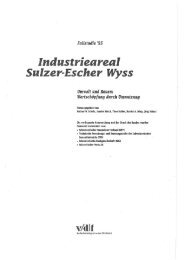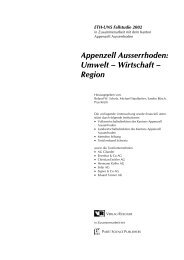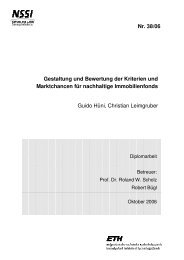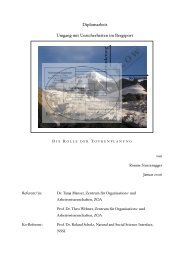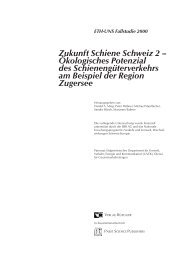The Paradigm of Human-Environment Systems - Natural and Social ...
The Paradigm of Human-Environment Systems - Natural and Social ...
The Paradigm of Human-Environment Systems - Natural and Social ...
Create successful ePaper yourself
Turn your PDF publications into a flip-book with our unique Google optimized e-Paper software.
Rol<strong>and</strong> W. Scholz & Claudia Binder<br />
Adaptation <strong>of</strong> explanatory models <strong>and</strong> environmental dynamics in urban sanitation<br />
We illustrate the PSM <strong>and</strong> the multi-hierarchy dynamics <strong>of</strong> the HES by an example from<br />
environmental hygiene, i.e. cholera management. This is considered to be an appropriate example<br />
<strong>of</strong> the linkage <strong>of</strong> different feedbacks between system levels <strong>and</strong> time horizons. It shows<br />
the necessity <strong>of</strong> relating different disciplinary methodologies for underst<strong>and</strong>ing sustainable<br />
development.<br />
A radical change in the 10 5 year history <strong>of</strong> human occurred about 5000 B.C., when Mesopotamians<br />
started living in cities (Benevolo, 1957). At that time the world population was approximately<br />
20 million. With an increasing growth rate, the world population reached 320 million<br />
by AD 1000. This growth can be considered as an outcome <strong>of</strong> goal, strategy formation <strong>and</strong><br />
action on the individual level (e.g., reproduction strategies, innovation, <strong>and</strong> efficacy <strong>and</strong> effi-<br />
ciency in work division) that was manifested on <strong>and</strong> supported by the societal level. <strong>The</strong> support<br />
function is related to the building <strong>of</strong> institutions, which allowed for the labor diversification<br />
<strong>and</strong> division (Boserup, 1981). <strong>The</strong> new arrangements <strong>of</strong> the human species, i.e., living in<br />
cities, caused major changes in water <strong>and</strong> nutrition supply as well as in waste <strong>and</strong> sewage disposal<br />
as secondary feedbacks. This fundamental change in the setting <strong>of</strong> living caused benefits<br />
but also catastrophes originating from unknown dynamics in the environment.<br />
<strong>The</strong> increasing <strong>and</strong> up to then unknown crowding in urban systems was accompanied by<br />
epidemics such as the Black Death epidemic, cholera <strong>and</strong> typhoid fever. As can be seen from<br />
Figure 1, some <strong>of</strong> these epidemics almost decimated the population. For example, in Europe, in<br />
each <strong>of</strong> the two pest epidemics (AD 542 <strong>and</strong> AD 1351) more than 25% <strong>of</strong> the population died<br />
(Figure 3).<br />
Figure 3: <strong>The</strong> impact <strong>of</strong> pest<br />
epidemic on population in<br />
Europe (Source: adapted from<br />
Bolognese-Leuchtenmüller,<br />
1997)<br />
12 April 2003



